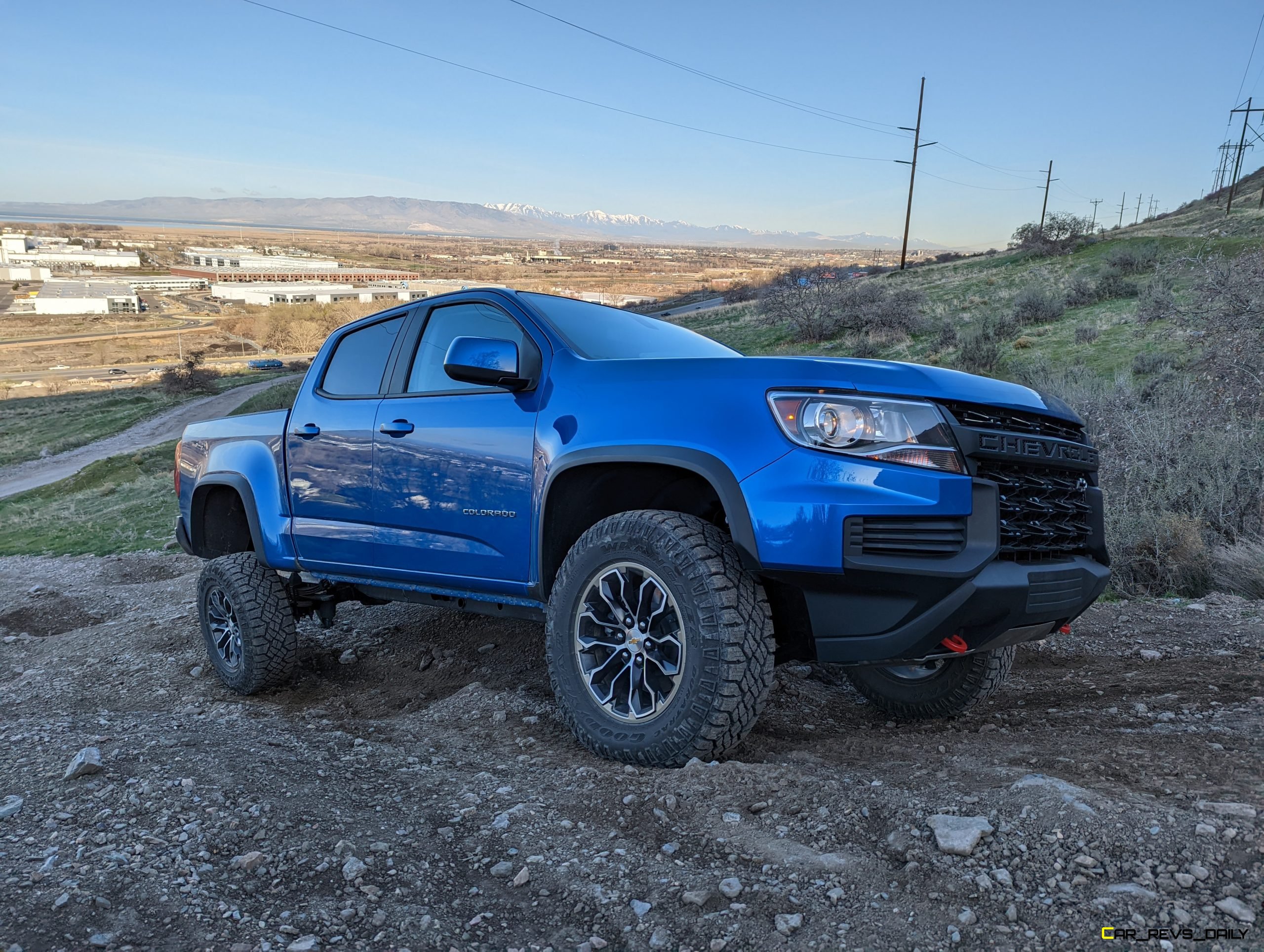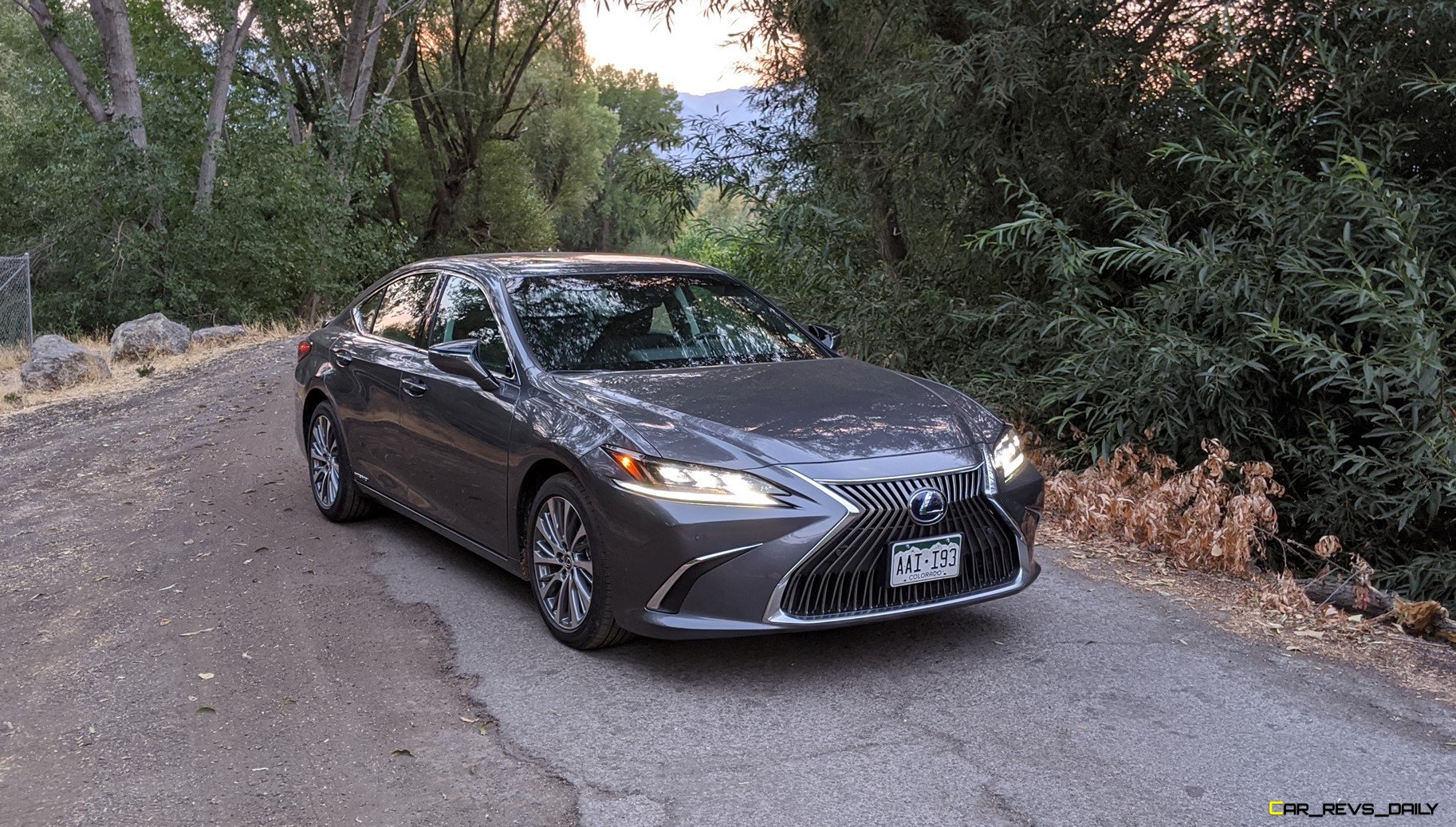The Lexus ES is moving upmarket. Can it step up to the task?
The seventh generation ES was new for 2019 with the 2020 model receiving a few minor updates. Moving forward, the ES will have to cover for its traditionally sportier sibling with Car and Driver, reporting that the GS is going out of production.
Exterior
You’d be forgiven for mistaking the Lexus ES for a sports sedan. The updated design is beautiful, sporty, and luxurious. The ES is longer and lower than the previous generation with the wheels pushed out to the corners. It is a gorgeous car from nearly any angle.
Lexus’ polarizing spindle grill adorns the front, along with LED lighting and what appear to be brake cooling vents in the front bumper. With the lower half of the body being significantly wider than the upper half, it has a little bit of a wide body appearance to it from the front and rear.
From the side, it is clear that the passenger compartment is large, and it somehow looks inviting and comfortable from the outside. There are body lines that appear and disappear gradually to break up the monotony of the large side panels. The chrome trim around the windows forms a point at the rear, giving the appearance of motion. On the trunk is a small spoiler which adds to the sporty look. The rear glass slopes like a fastback, but there is a traditional trunk and not a hatch.
Moving to the rear, the taillights form what could be a Lexus “L” when looking at only the left light, or a field goal post when looking at both sides. Much like the front, there are a lot of features and creases to break up the rear into an appealing design.
Hybrid badging is located on the lower front doors. There are also blue accents on the Lexus emblems and within the 300h badge on the trunk. The wheels start out as five spoke in the center which split into ten large spokes, with an additional ten smaller spokes. The design isn’t perfectly radial, which is unique for a wheel, but very well executed.
Interior
From its inception, Lexus has always been about premium products. That trend continues with many vehicles across the lineup having excellent quality, reliability, and drivability characteristics. Along with that, the ES is quite possibly the most comfortable front wheel drive vehicle on sale today.
Upon entering the cabin, the first thing noticed is the high-quality interior. The leather is soft and supple, making for soft touch surfaces just about everywhere one would rest a hand or arm. We say just about because the windowsills are still fairly hard, so resting an arm on the windowsill can get bothersome after a while.
Everything looks modern with roughly 20 steering wheel buttons, a digital dash, heads up display, and a 12.3-inch infotainment screen. Despite this, it still retains an air of old school luxury and simplicity. The necessary analog clock is included because a luxury car isn’t a luxury car without an analog clock. Adding to the high end feel, our test model was equipped with the optional Mark Levinson 17-speaker sound system.
The front seats are heated and ventilated along with the heated steering wheel. When the corresponding button is pushed for any of these features, they go to an automatic mode that determines if they need turned on and how much. The seats automatically switch between ventilated and heated as needed. Of course, with another push of the button, they go to the manual mode where the driver or passenger can choose what level of heating or cooling they want.
Driving
Heavy front wheel drive vehicles often have serious torque steer and poor traction, but that is changing. The ES pulls relatively hard at launch with the electric motor having instant torque, but this falls off a little as it gains speed. The 0-60 time is 8.2 seconds, which isn’t fast, but is enough for nearly any situation. At highway speed, there is always enough power to pass slower moving vehicles when needed.
An issue we found ourselves having with the ES is that it’s so quiet inside on the highway that it is very easy to exceed the speed limit without knowing it. As expected from a large sedan, highway cruising is where the ES shines. It glides along, smoothing out the road imperfections and isolating the passengers from the outside world.
Even at low speeds and larger bumps the ES does a good job of mitigating any harsh impacts and damping any additional noise. Many front wheel drive vehicles have a loud thump when hitting potholes; not so in the ES.
Thanks to the hybrid system, the ES 300h nets an EPA 44 mpg combined rating and we achieved over 40 mpg during our week with it. The hybrid system does a really good job of seamlessly switching between the electric and gas motors. On the other side of that is the switch from regenerative braking to the service brakes. There is an occasional and unsuspected increase in breaking force during the switch. It didn’t happen all the time, but it was certainly noticeable when it did.
Pricing
With a base price of $41,760, the ES 300h is a good value. Our tester was outfitted with $11,000 in options, which brings the total including the destination charge to $53,810. The most significant options were the Navigation and Mark Levinson Audio Package for $2,900, Premium Package for $1,375, and Triple Beam LED Headlights for $1,515. Another option it had that we thought is an exceptional value is the $75 wireless phone charger.
Conclusion
From its beginning, Lexus has always been about building the highest quality vehicles at a better value than the mainstream luxury competitors. The ES 300h is an excellent entry level luxury vehicle that can be optioned with as many or as few features as one wants. With great fuel mileage, good power, and excellent highway cruising characteristics, the ES 300h is a top competitor in the class.

Matthew Barnes is an experienced towing expert. He works as a mechanical engineer and his day job involves testing a variety of vehicles while towing trailers of all types and sizes. Matt shares his knowledge by writing for automotive news outlets in the evenings. When he’s not working he can be found spending time in the great outdoors with his family. He enjoys camping, hiking, canyoneering, and backpacking. Whenever possible he spends time riding in or on any power sports vehicle he can find and claims he can drive anything with a motor, which probably isn’t true.
Matt lives in the Utah mountains and often posts cool off-roading videos to his Instagram and YouTube channel.











































